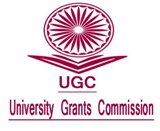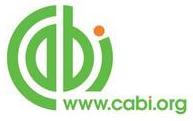Income Generation Pattern of Self Help Group (SHG) Members
Abstract
The fulcrum of any micro credit scheme is savings. The SHGs make it mandatory that savings are an inextricable part of their micro credit programme. Each SHG has a unique system of organizing and managing its own finance and operates as an independent unit. The SHG also provides a forum for social interaction, which serves as an alternate social structure for peer level interaction. With this background, the present study was conducted in Aundipatti, Periyakulam and Uthamapalayam blocks of Theni district of Tamil Nadu, covering 220 SHG women. The purpose was to obtain information on the participation of self-help group members in various income generating activities. All the members of SHGs and grass root level workers of NGOs were interviewed through a well-structured interview schedule. The various income generating activities are divided into Agricultural, agricultural allied and non-agricultural enterprises. The study revealed that, most (45.45%) of the SHG members had taken up paddy cultivation as their primary economic activity and less than half of the respondents had dairy (45.45%) as the major agricultural allied enterprise. The major group activities included napkin making (13.63) and curry leaf powder (11.36)preparation.References
Anonymous, 1975. World Conference of the United Nations, the Decade for the Women, Nairobi, Kenya.
Asokhan, M. 2006. Empowerment of Rural Women through Self-Help Groups- An Empirical Analysis. Unpub. Ph.D. Thesis,
AC&RI, TNAU, Coimbatore.
Downloads
Published
2016-05-31
How to Cite
Karuna Jeba Mary, M., Ravichandran, V., & Sujeetha, T. (2016). Income Generation Pattern of Self Help Group (SHG) Members. Journal of Extension Education, 27(1). Retrieved from https://extensioneducation.org/index.php/jee/article/view/32
Issue
Section
Research Article
License
Authors who publish with JEE agree to the following terms:
- Authors retain copyright and grant JEE right of first publication with the work simultaneously licensed under a Creative Commons Attribution License that allows others to share the work with an acknowledgement of the work's authorship and initial publication in this journal.
- Authors are able to enter into separate, additional contractual arrangements for the non-exclusive distribution of the journal's published version of the work (e.g., post it to an institutional repository or publish it in a book), with an acknowledgement of its initial publication in this journal.
- Authors are permitted and encouraged to post their work online (e.g., in institutional repositories or on their website) prior to and during the submission process, as it can lead to productive exchanges, as well as earlier and greater citation of published work (See The Effect of Open Access).
Extension Education Society
https://creativecommons.org/licenses/by-nc-sa/4.0/
This work is licensed under a Creative Commons Attribution-NonCommercial-ShareAlike 4.0 International License.









.png)

